How To Update Your Old Blog Posts For Maximum Traffic

Creating new content is hard.
Updating old blog posts with new keywords or fresh data can seem like a waste of time
Some would say – “why bother if it did not perform the first time around?“
Re-optimizing old content is getting more and more popular and for a good reason. Brian Dean at Backlinko recently shared his findings: tweaking an old blog post of his resulted in a 58% organic boost.
Here’s another example:
Jeff Baker, over at Brafton, set out to re-optimize a couple of blog posts. Check out his results:
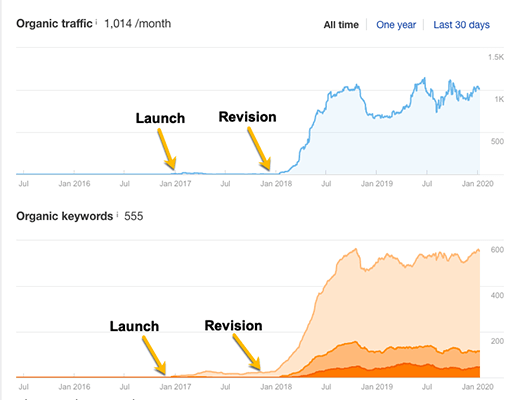
To top this, let me remind you that:
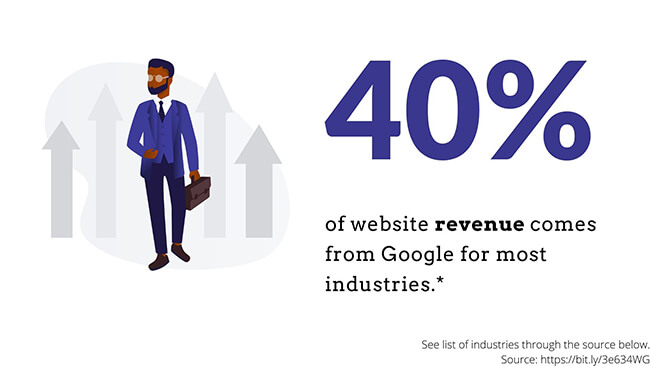
This stat ⬆️ is a great motivator for me during SEO projects.
If there is a better keyword just around the corner, then don’t leave revenue dollars on the table. SEO also has one of the best ROI’s in online marketing.
This means that updating your old content is absolutely worth it if you do it right.
You just need to keep a few re-optimization best practices in mind before you start:
- Only update your blog post if the new keywords have considerable search volume or better purchase intent.
- Ask yourself: what were the content goals in the first place? Why did you not achieve them?
- Double-check if the new keyword is appropriate for the target audience.
- Are you having trouble demonstrating a great E-A-T? (expertise, authority, trustworthiness) For example, is your About us filled out and interesting? Is your content well-written with engaging media (images, video, slideshows, infographics)? Is the author an expert?
In this post, I will walk you through the process of updating your old blog post with new keywords. I will share my all-time favorite keyword research technique that works especially well with re-optimization.
Here we go.
5 steps to updating old content to boost search performance
Ready for some on-page optimization (for the second time)?
Good news: you won’t need expensive SEO tools to aid you.
You will only need Google tools for this exercise: Google itself, Google Trends, Google Analytics, Google Search Console, and Google Ads. All free!
Step 1: Evaluate your original keyword’s user intent
Changes in digital marketing and especially SEO are inevitable. What worked years ago will not work today.
Ever since the BERT algorithm came out in 2019, Google’s focus has shifted to user intent more than ever. BERT’s goal was to understand the prepositions like “for” or “to” in a search phrase.

This is what a SERP may look like before and after BERT
How should you adjust to BERT?
For one, you can check to make sure you’re not piggybacking on an irrelevant keyword that has such a modifier because Google will send your blog post aaaall the way to the end of the search results pages.
And two, check if you could add keywords that have modifiers relevant to your topic. I will uncover the ‘how’ for both these tasks in just a bit.
Note: Revamping old content into content that solves real user problems will get you an easy performance win.
Step 2: Check the strength of your original keyword
Did you maybe get carried away a bit the first time you wrote your blog post? Is your main keyword actually super competitive, too broad, or has a low search volume?
Don’t get me wrong; low search volume can be a good thing if it’s a juicy long-tail keyword.
Check this out:
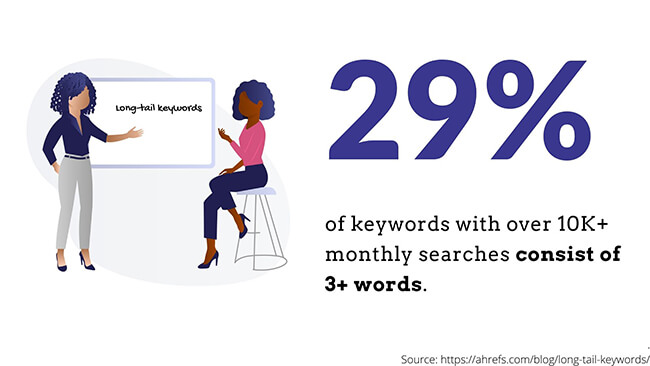
Long-tail keywords are magical. They might not have high search volumes but they’re excellent at helping you reach the first page of Google faster.
You can use the Keyword Planner in Google Ads to see historical search volumes. Also, take a look at Google Trends to see your keyword’s popularity.
Step 3: Find new focus keywords and LSI keywords
Now to the best part. This method will change your life.
After you publish a blog post, Google may end up ranking you for a bunch of keywords you did not intend to rank for. To that, we say, “please, and thank you.”
You can find these keywords in Google Search Console.

Go to Search Console → Click on Performance in the sidebar.
Take a look at your queries.
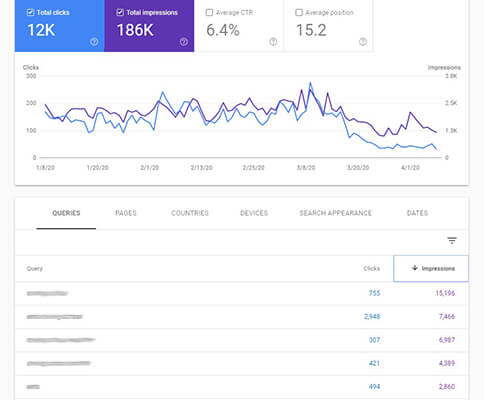
It’s all your keyword dreams presented on a silver platter. You could find your new focus keyword or LSI keywords here.
What are LSI keywords?
LSI, or Latent Semantic Indexing, are types of supporting keywords that are relevant for the topic. For example, if you have a skiing business, the word ‘mountain’ or ‘snow’ will make sense as neighboring keywords.
How do you know which keywords to pick?
First, play around with the settings a bit. I found that there are two ways you can go about it to get keyword ideas quickly.
- Sort them by Impressions in descending order. This will tell you which keywords get high interest. These could be your potential new focus keywords.
- Sort them by Impressions in ascending order. You will likely find long-tail keywords here, synonyms and LSIs.
Of course, don’t just go around adding everything into the content. See if you can find phrases that make sense to your topic. Keep reading for more info on this.
Pro-tip: Ride the BERT-wave by looking for relevant keywords with prepositions (best to export this report for in-depth investigations).
Google Related Searches
Add even more keywords to your roster by simply using Google. The Related Searches at the bottom of each SERP can provide insight into popular (even long-tail) keywords. This method is great for finding even more LSI keywords.
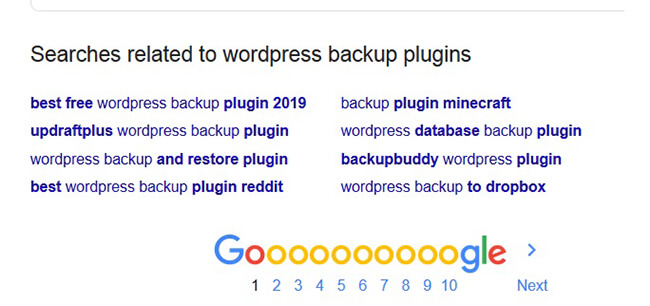
These long-tail keywords would make excellent LSI-keywords (if you’re writing a comparison post) or even focus keywords (if you’re writing a review).
Integrating your post with LSIs is a great way to increase relevance, and increase search traffic as you increase the number of keyword targets within a single article.
Step 4: Perform on-page re-optimization
What is E-A-T?
I’ve mentioned E-A-T earlier in this post. E-A-T can be found in Google’s Search Quality Rater Guidelines. It helps human search quality raters in their manual evaluation and helps webmasters understand what Google looks for in a web page.

How can you comply with E-A-T when doing on-page re-optimization?
- Update content regularly – not just for SEO but also to ensure the information is up to date (including fact-checking)
- Complete your About us FULLY. Use all your credentials to convince the reader of your authority
- Provide different ways to contact you
- Optional but useful: hire experts to write for your website (think: guest blogging)
- Consider doing a website redesign to convey a more professional image
Optimizing titles, headings, and content
Title tags are often the first thing a user sees of a website. It’s a big deciding factor on whether they will click through. So, take your time in crafting a creative title.
Using target keywords in your subheading (H2, H3, etc.) is still relevant today but do not over-optimize with exact-matching keywords. Those days are over, thanks to Google’s rapid AI-improvement. Use what comes naturally and only inject a target keyword if it makes sense.
Everyone and their dog already knows about the importance of high-value content. But what does it mean in practice?
Ingredients for a high-quality blog post:
- Informative, well-written content by an expert in the industry
- Useful, up-to-date advice
- 1,000-words minimum
- Intriguing meta description
- Outstanding visuals, such as images, infographics
- A nice, UX-optimized layout
- Leveraging videos
- Case studies
- Helpful internal links (keep the anchor text natural)
In addition, Yaniv Masjedi, CMO of Nextiva, recommends adding CTAs to relevant lead magnet assets – case studies, eBooks, and testimonials – to amplify the conversion numbers from each post.
Note: When you’re done updating your old blog post, change the publish date in WordPress for today. This is to signal your freshly updated content to Google.
On another note, optimize sales and landing pages follow a similar process. You want to shoot for valuable content presented in a valuable way.
For example, integrating your service page with an interactive walkthrough like how SalesFlare created for their trial page:
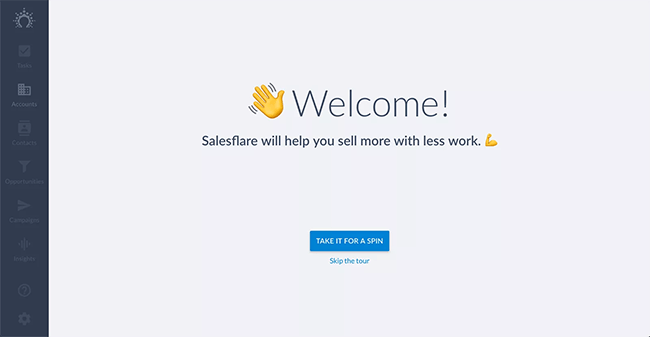
That said, when it comes to landing pages, you want to integrate your content with the user experience, funnel and user for that respective page.
As DJ Francis, VP of Content Strategy, Imagination Pub says:
Consider the user journey as they structure their content and site experience. In my experience, we are usually called on to accommodate many different buying stages.
Pro-tip: Take landing page optimization a step further and create a heatmap for your website. These tools are aimed to study user behaviour and optimize based on real user-generated data.
Step 5: Run a quick content audit for your website
Now that you’re in the groove don’t stop updating your content at the first post you think of. Unless you have a brand-new site, you will have problem posts on your website. Run a proper content audit to get rid of bad apples (read: thin content, old stuff).
Hunter Branch from Rank Tree, when faced with a similar dilemma, unpublished 90% of his client’s blog posts. This and other SEO measures resulted in a 600% organic traffic increase in 24 months.
This example is a successful but bold move, which is why you need to keep a check on your blog portfolio as it leads to content overload issues that do more harm than good.
Here’s how you run a content audit with Screaming Frog:
1. Integrate Google Analytics, Google Search Console and Ahrefs to enhance your audit with important metrics:
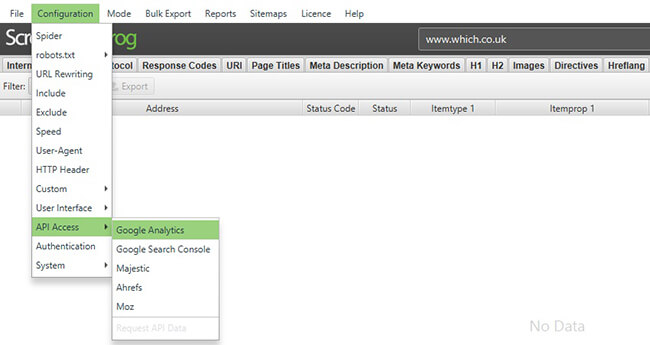
You can integrate all three tools from Configuration → API Access
2. Run a crawl on your website.
3. Export your results into Excel.
4. In Excel, press Ctrl+A to select the entire table.
5. Then click Format as table and select a style.
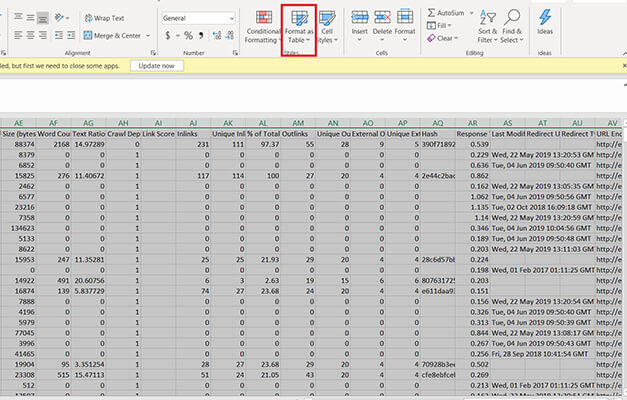
6. Finally, sort your table low to high to see the following metrics:
- Word Count (for thin content)
- Metrics for Google Analytics, such as users, sessions, conversion rates
- Metrics for Ahrefs, such as Ahrefs refdomains
7. Make a list of all the low-performing pages and evaluate whether they are worth updating
You’ll then need to decide whether you’ll want to keep or delete the content. For any content that you delete, you’ll need to redirect it to the next most relevant post.
If you decide to keep it, you’ll either need to leave it as is, update/optimize it, or rewrite it entirely. Sometimes a quick refresh is enough to give it a boost, however.
Note: Re-sharing posts on social media could generate a significant boost to your content. Schedule several social posts into the future for each of your updated blog posts. There are plenty of social scheduling tools on the market. There are even dedicated tools available to schedule Instagram posts.
Re-cycle a lot, create a lot
Updating your old blog posts is a great SEO hack, but don’t forget about creating new content, either. There is always something new to cover or a different angle to take. Re-optimizing should only be part of your content strategy, not the whole thing.
Thankfully, you can use Google Search Console’s query list for new content ideas the same way. This is why Google Search Console has been my secret weapon over the years.

